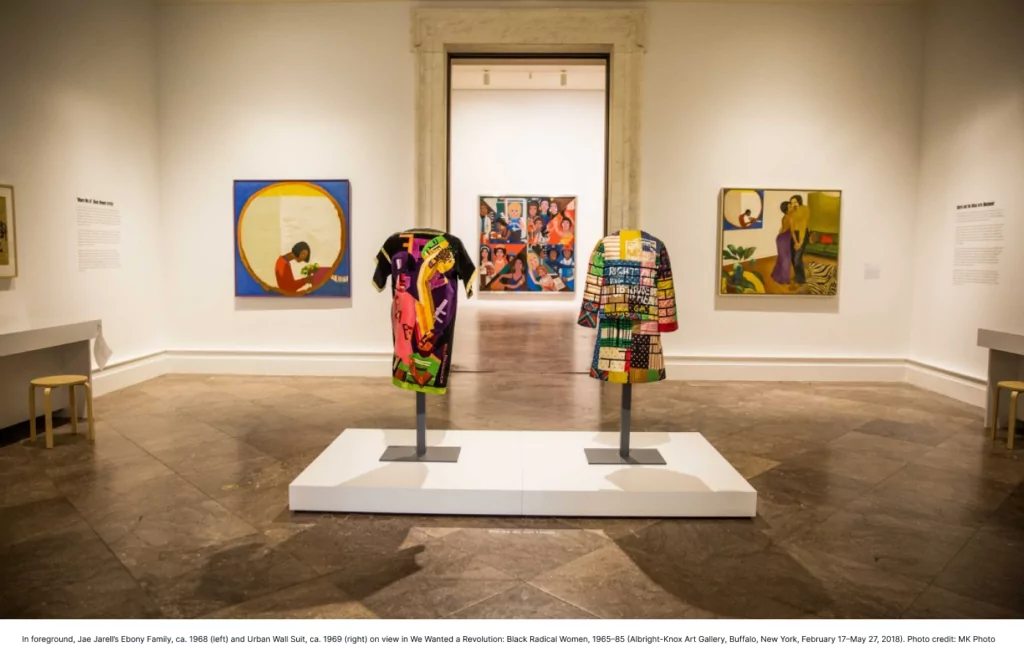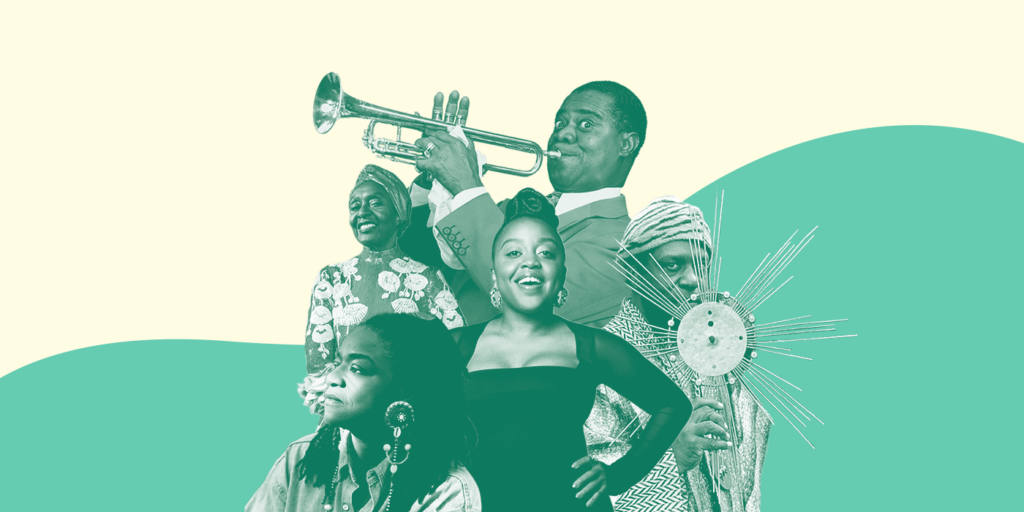As Black History Month gets underway, it’s the perfect moment to take a trip back in time to celebrate the resilience, creativity, and monumental milestones within the African/Black Diaspora—starting with the arts, from the Harlem Renaissance to Afrofuturism and beyond!
What’s The Connection Between The African/Black Diaspora and The Arts?
Set each year by the Association for the Study of African American Life and History (ASALH), 2024’s theme of African/Black Diaspora and the Arts explores the key influence African Americans have had in visual and performing arts, literature, fashion, folklore, language, film, music, architecture, culinary, and other forms of expression. The ASALH’s mission is to research, preserve, and share information about Black life, history and culture to the global community.
Members of TR Noir, Taskrabbit’s employee-led Black affinity group, shared what this theme meant to them and how important Black representation in the arts is. As Paris Fisher, technical program manager, puts it: “To me, this theme showcases Black tastemakers and trendsetters who created entertainment and art so beautiful that it crossed racial divides.”
Paris realizes the importance of creating a rich Black cultural legacy that transcends time.
“Art serves as a mirror into our own experiences and encounters and serves as a compass helping to direct us to our wildest dreams,” she says.
Su’ad Mohamud, software engineer, says, “To me, the theme is a showcase of how versatile and cutting-edge Blackness is and will always be. I was fascinated to learn how jazz musicians would resiliently create the most complex, unique compositions to prevent white musicians and music corporations from stealing their creative work and profiting off of it. Our creativity expands and grows but never forgets where it comes from.”
Read on to learn more about different artistic eras, beloved artists, and how it’s all tied together and inspired by people in the African/Black diaspora.
When Jazz Echoed Through the Streets
The Harlem Renaissance (1920s-1930s) was a time when art, music, and literature exploded and flourished. The voices that rose above helped lay the foundation for a legacy that shapes the arts still to this day.
Artists who rose to prominence during this time include the following.
Louis Armstrong (jazz trumpeter)

One of the greatest jazz musicians of all time, he became the first Black American to receive feature billing in a major Hollywood film—1936’s Pennies from Heaven. He also recorded songs such as Star Dust and What a Wonderful World.
Zora Neale Hurston (writer and anthropologist)
Known for the novel Their Eyes Were Watching God, she recorded cultural history, helped launch the literary magazine Fire!!, and became a fixture of New York City’s Harlem Renaissance.
Josephine Baker (dancer and singer)
A popular dancer and singer in France in the ‘20s, she also worked for the French Resistance during World War II, and devoted much of her life to fighting segregation and racism in the US throughout the ‘50s and ‘60s.
Honoring the Civil Rights Era and March for Freedom
In the struggle for equality in the ‘50s and ‘60s, let’s honor those who paved the way for justice and equality. This courage, determination, and resilience naturally expressed itself in the arts as well.
Su’ad’s favorite artist from that era is Faith Ringgold, while Paris’ is Jae Jarrell. Learn more about these two artists below.
Faith Ringgold (painter and mixed media artist)
She created her first political paintings, The American People Series from 1963 to 1967. She is best known for her painted story quilts with her most famous quilt, Tar Beach, displayed at the Solomon R. Guggenheim Museum in New York.
Jae Jarrell (fashion designer, painter, and sculptor)

She is best known for her involvement in the Black Arts Movement of the ‘60s. She is also a co-founder of AfriaCOBRA, the African Commune of Bad Relevant Artists, that celebrated culturally-specific positive text and images of contemporary Black communities in everyday life.
“Black artists have the power to educate about and dismantle oppression through beauty. It stretches across the diaspora and the globe, intertwining liberation, connection, and expression,” Su’ad says. “The contributions of Black artists exist at the root of so many art forms and still inspire the future.”
Funky Rhythms, Bold Fashion, and Social Revolution
The groovy decades of the ‘70s, ‘80s, and ‘90s brought about funky beats, fashion statements, and the continuing evolution of Black culture.
“Art is being used as a never ending testament to the strength, softness, creativity, identity, and dreamspace of our ancestors,” says Paris.
Su’ad’s admires Bethann Hardison, a fashion model and activist. Ernie Barnes, a painter, is Paris’ favorite artist of the ‘70s. Keep scrolling through to learn more!
Bethann Hardison (model and activist)
She became one of the first high-profile Black models after appearing in the 1973 Battle of Versailles fashion show. A groundbreaker in the world of fashion, she’s also been an activist advocating for change in common beauty standards and championing diversity in the fashion industry.
Ernie Barnes (painter)

Known for his unique painting style with movement and elongated characters, he was also the first professional football player to become a noted painter. The figures he painted most often had their eyes closed to illustrate ‘“how blind we are to one another’s humanity”’ and the tendency to ‘“stop at color.”’
Enter the 2000s – A New Millennium, New Narrative
A time of questionable fashion choices, the rise of reality TV, and the birth of the Internet are just a few things the 2000s are known for. A time of experimentation and innovation, this wild new millennium helped birth some of the greatest hits across all mediums of Black art.
You may already know a bit about these next two artists—favorites of Paris and Su’ad’s include Quinta Brunson and Virgil Abloh.
Quinta Brunson (writer, producer, actress, and comedian)
Best known for creating, writing, producing, and starring in the ABC comedy series Abbott Elementary, she first rose to fame in her self-produced Instagram series The Girl Who Has Never Been on a Nice Date. She recently became the first Black woman in more than 40 years to win best actress in a comedy series at the Emmy Awards and the first from a network show to win it in more than a decade.
Virgil Abloh (fashion designer and entrepreneur)

He founded the fashion house Off-White, a Milan-based label, in 2013, which combines ideas of streetwear, luxury, art, music, and travel. He was also the artistic director of Louis Vuitton menswear, and famously championed the 3% rule—that a mere 3% change to any existing design can transform it into something new and radical.
Afrofuturism: Bridging the Past to the Future
The future of Black arts is full of artists boldly blending technology, culture, and imagination to redefine and pave the way for a rich future. Sun Ra, Father of Afrofuturism, is an artist Su’ad looks up to while Paris enjoys listening to Missy Elliot, whose expression of Afrofuturism through music was arguably ahead of her time.
Sun Ra (father of Afrofuturism)
An early pioneer of Afrofuturism, Sun Ra’s influence can be seen throughout many aspects of Black music that remains relevant today. The term ‘Afrofuturism’ is a way of defining existing trends that focus on Black literature and 1980s technoculture. Sun Ra created ‘space music’ as a way to build a better future for Black Americans.
Missy Elliott (rapper, singer, record producer, and songwriter)

From the start, her debut 1997 album Supa Dupa Fly set the tone for what her sound would be—futuristic. For 30 years, she’s created new paths for women in a male-dominated genre and has continued to redefine hip hop and R&B while celebrating her Blackness. She is also the first woman rapper, and third hip hop artist, to be inducted into the Songwriters Hall of Fame and earn the MTV Video Vanguard Award.
Learning about the struggles, triumphs, and contributions of the Black community only enriches your understanding of the world you live in today. Let’s continue to celebrate the rich tapestry of Black history, share knowledge, and commit to empathy, respect, and unity beyond Black History Month.














